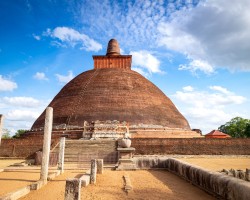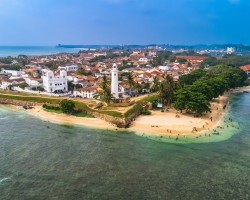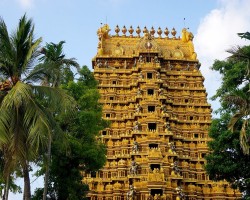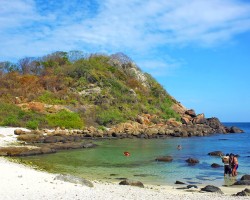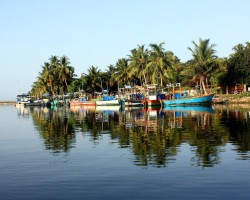Best time to go to Sri Lanka for a perfect weather and where to go?
When is the best time to go to Sri Lanka?
The best time to visit Sri Lanka varies depending on the chosen destinations. Indeed, throughout the year, while precipitation increases in one part of the island, the weather remains dry in another region. Thus, it is possible to travel to Sri Lanka all year round.
The period from December to March is favorable for exploring Colombo, the capital, as well as the locations in the west and south. You can then enjoy the beaches in peace, but also discover the immense variety of landscapes in the country. The sun is omnipresent during this period and the water temperature is ideal. This season is also favorable for visiting the central part of Sri Lanka.
On the other hand, to explore the north and east of Sri Lanka, it is best to choose the period from May to September. Indeed, even though the heavy monsoon is in full swing in the west, the rest of the territory is spared from rain, thanks to the geographical configuration of the island of Ceylon.
However, even if the rainy season may be a concern, it is important to keep in mind that it doesn't rain all day. Showers and thunderstorms usually occur in the late afternoon, and mornings are generally sunny.
Furthermore, to travel to Sri Lanka away from the tourist crowds, it is preferable to go during the low season, between May and September or during the shoulder seasons, between late November and late December for example. These less touristy periods will allow you to visit Sri Lanka while saving money.
Finally, if you are wondering when to visit Sri Lanka, know that there is no really bad choice to plan your trip. However, it is best to avoid the months of heavy rains such as October and November when precipitation is more abundant throughout the territory. In addition, the month of April, one of the hottest and most humid, may also be less pleasant for travelers.
This text has been automatically translated.
Where and when to go based on the weather?
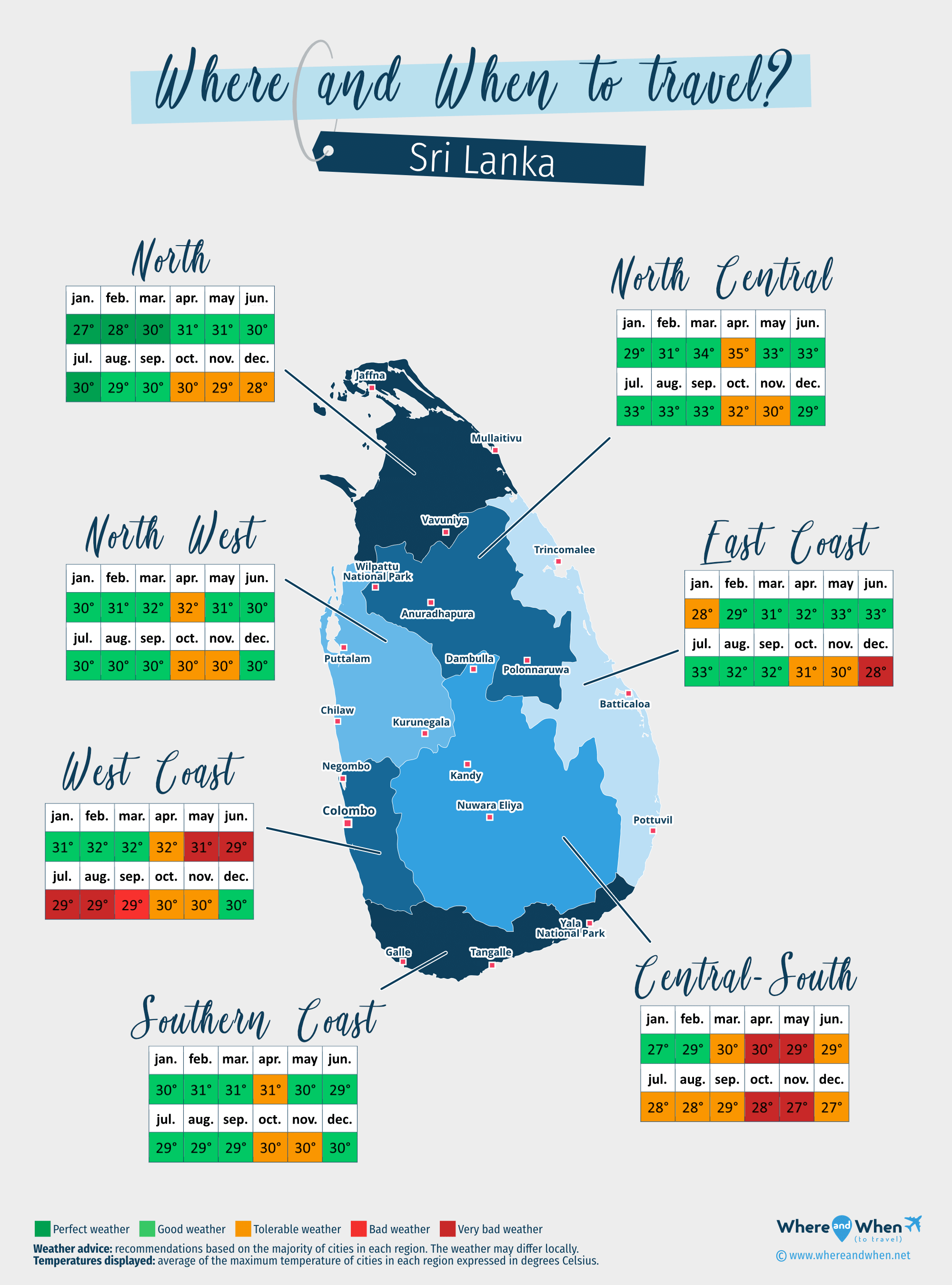
Central-South of Sri Lanka
Kandy, Nuwara Eliya, Dambulla...
East Coast of Sri Lanka
Trincomalee, Batticaloa, Pottuvil...
North of Sri Lanka
Jaffna, Mullaitivu, Vavuniya...
North Central of Sri Lanka
Anuradhapura, Polonnaruwa, Wilpattu National Park...
North West of Sri Lanka
Puttalam, Kurunegala, Chilaw...
Southern Coast of Sri Lanka
Galle, Tangalle, Yala National Park...
West Coast of Sri Lanka
Colombo, Negombo, Kalutara...
To get all the information about the climate and weather in Sri Lanka for a specific month, click on the corresponding link below:
Sri Lanka in january Sri Lanka in february Sri Lanka in march Sri Lanka in april Sri Lanka in may Sri Lanka in june Sri Lanka in july Sri Lanka in august Sri Lanka in september Sri Lanka in october Sri Lanka in november Sri Lanka in december
Best time to travel to Sri Lanka by cities
Climate and Weather in Sri Lanka
Located in the heart of the Indian Ocean, off the coast of India and not far from Indonesia, Sri Lanka has pleasant weather with constant heat. Temperatures generally range between 20 and 35 °C. Additionally, Sri Lanka's climate is influenced by its proximity to the Equator. Therefore, humidity prevails over most of the territory, and the moisture in the air can be challenging at times. Sri Lanka has a tropical climate, characterized by alternating dry and wet seasons.
Climate of Sri Lanka - Wet Season
There are two main monsoon periods in Sri Lanka in different areas of the island.
- The major monsoon affects the southwest of Sri Lanka, particularly around the capital. It brings heavy rains from May to October. The humidity can reach close to 95% at times, along with moist heat.
- The minor monsoon, on the other hand, occurs from December to March on the east coast of Sri Lanka, such as in Trincomalee. Its intensity varies from year to year.
During the wet season, Sri Lanka can experience torrential rains leading to floods and landslides. However, some periods are less severe, making travel possible during this season.
Nevertheless, one of the major risks of traveling during the monsoon in Sri Lanka is the rough sea conditions. Indeed, underwater currents are often very dangerous at this time of the year.

Tropical Cyclone Risk in Sri Lanka
Sri Lanka is also exposed to the risk of tropical cyclones. The cyclone season extends from April to December, with a higher frequency in May and November. Although it is rare for the island to be directly hit, tropical depressions bringing strong winds and heavy rains are common during this period.
Weather in Sri Lanka: Mostly Sunny!
Overall, the climate in Sri Lanka is relatively pleasant. There are beautiful sunny periods and the sea is suitable for swimming all year round. Additionally, although Sri Lanka experiences frequent showers, they are usually followed by clear skies.
The unique aspect of the weather in Sri Lanka is that the wet season varies from region to region.
Let's now explore the climate region by region to help you plan your trip.
Climate of the West Coast of Sri Lanka
This region, known for its abundance of beautiful beaches, is one of the most touristic in the country. However, it is quite rainy. For example, in Colombo, it can rain up to 2,500 mm per year.
Fortunately, precipitation decreases from January to March and also from June to August. Thus, the weather is very sunny from January to April, while the sky is more often overcast between May and September. Tourists are more numerous during the Christmas holidays.
Climate of the Central Region
In the mountainous region, in places like Nuwara Eliya, the heat is less intense throughout the year, making this region pleasant to visit. Nights can be cool, especially between December and April.
Moreover, the weather is relatively dry during this period. However, if you plan on hiking, such as climbing Adam's Peak, it's best to avoid the wet season, which mainly occurs between October and December.
Furthermore, in the central plains, like in Anuradhapura, temperatures remain high throughout the year. Precipitation is relatively low compared to the west coast, with a peak from October to December.
Climate of the South Coast
The weather in this region is similar to that of the West Coast. There is a dry season from December to April. The ideal period for a visit is from February to March, the time of turtle nesting. This region is perfect for enjoying the beaches and going on a safari.
The southeastern coast, on the other hand, is well protected from the monsoon phenomenon. In the city of Hambantota, precipitation is quite low throughout the year. There are more rainy days in April and May, but the weather is very pleasant all year round.
Climate of the East and North
The east coast of Sri Lanka experiences a climate quite different from the west of the country. Here, there is a rise in temperatures and very dry weather starting from April, when the monsoon begins on the west coast. You can explore this region and its beaches until September enjoying pleasant weather. However, the northeast monsoon affects this region between October and December.
On the other hand, the northeast of Sri Lanka, like in Jaffna, is partially shielded by India. This region experiences high temperatures throughout the year and less precipitation. The rainiest period is also between October and December.
This text has been automatically translated.
Temperatures and rainfall in Sri Lanka
On these 3 graphs, we present the evolution of temperatures of Sri Lanka and month-by-month rainfall for the cities of Colombo, Anuradhapura, Galle, Jaffna and Kandy, as well as the month-by-month sea temperature for coastal cities.
Peak visitor numbers and tourist seasons in Sri Lanka
Find out when Sri Lanka has its high tourist season (the period when the influx of tourists is highest) and off-peak tourist season using our data and figures.
Tourist seasons in Sri Lanka
The months with low numbers of tourists are: March, April, May, June, September, October and November. The number of visitors to Sri Lanka is high in: January, February, July, August and December.
- Very low season in Sri Lanka: April, May, June, October and November.
- Low season in Sri Lanka: March and September.
- High season in Sri Lanka: January, February and July.
- Peak season in Sri Lanka: August and December.
Figure: Visitor index for Sri Lanka month by month
Average price for flights to Sri Lanka
A return flight between Melbourne and Colombo is generally cheaper if you go in may ($ 790 on average): this is the best time for travellers on a tight budget. In contrast, you may end up paying $ 602 more for your airline ticket to Colombo if you go in december.
Find the best price for your flight Flight prices to Sri Lanka
Where to go in Sri Lanka?
This table allows you to see the maximum temperature for each city and our opinion on the weather month by month (see colour legend below the table).
| Cities | jan. | feb. | mar. | apr. | may | jun. | jul. | aug. | sep. | oct. | nov. | dec. |
| Colombo | 90°F | 92°F | 92°F | 90°F | 88°F | 86°F | 85°F | 85°F | 86°F | 88°F | 88°F | 88°F |
| Anuradhapura | 86°F | 90°F | 95°F | 95°F | 94°F | 92°F | 92°F | 92°F | 92°F | 92°F | 88°F | 86°F |
| Galle | 86°F | 88°F | 88°F | 88°F | 86°F | 85°F | 85°F | 85°F | 85°F | 86°F | 86°F | 86°F |
| Jaffna | 81°F | 83°F | 86°F | 88°F | 88°F | 86°F | 86°F | 85°F | 85°F | 86°F | 85°F | 83°F |
| Kandy | 85°F | 88°F | 90°F | 90°F | 88°F | 86°F | 85°F | 86°F | 86°F | 86°F | 85°F | 83°F |
| Trincomalee | 85°F | 88°F | 94°F | 95°F | 94°F | 94°F | 94°F | 94°F | 94°F | 92°F | 88°F | 85°F |
| Batticaloa | 83°F | 85°F | 86°F | 90°F | 92°F | 94°F | 92°F | 92°F | 92°F | 88°F | 86°F | 83°F |
| Chilaw | 88°F | 92°F | 92°F | 92°F | 88°F | 86°F | 86°F | 86°F | 86°F | 88°F | 88°F | 88°F |
| Dambulla | 85°F | 88°F | 94°F | 95°F | 94°F | 94°F | 94°F | 94°F | 94°F | 92°F | 88°F | 85°F |
| Kalutara | 88°F | 90°F | 90°F | 90°F | 88°F | 86°F | 85°F | 85°F | 86°F | 86°F | 88°F | 88°F |
| Kurunegala | 86°F | 90°F | 94°F | 94°F | 90°F | 88°F | 88°F | 88°F | 90°F | 90°F | 88°F | 86°F |
| Mullaitivu | 81°F | 83°F | 86°F | 88°F | 88°F | 86°F | 86°F | 85°F | 85°F | 86°F | 85°F | 83°F |
| Negombo | 88°F | 92°F | 92°F | 92°F | 88°F | 86°F | 86°F | 86°F | 86°F | 88°F | 88°F | 88°F |
| Nuwara Eliya | 77°F | 81°F | 83°F | 83°F | 83°F | 81°F | 81°F | 81°F | 83°F | 81°F | 79°F | 77°F |
| Polonnaruwa | 85°F | 88°F | 94°F | 95°F | 94°F | 94°F | 94°F | 94°F | 94°F | 92°F | 88°F | 85°F |
| Pottuvil | 83°F | 85°F | 86°F | 90°F | 92°F | 94°F | 92°F | 92°F | 92°F | 88°F | 86°F | 83°F |
| Puttalam | 86°F | 88°F | 90°F | 90°F | 90°F | 88°F | 86°F | 86°F | 88°F | 88°F | 86°F | 86°F |
| Tangalle | 88°F | 90°F | 90°F | 90°F | 88°F | 86°F | 86°F | 86°F | 86°F | 86°F | 88°F | 88°F |
| Vavuniya | 86°F | 90°F | 95°F | 95°F | 94°F | 92°F | 92°F | 92°F | 92°F | 92°F | 88°F | 86°F |
| Wilpattu National Park | 86°F | 90°F | 95°F | 95°F | 94°F | 92°F | 92°F | 92°F | 92°F | 92°F | 88°F | 86°F |
Legend:
perfect weather
good weather
tolerable weather
bad weather
very bad weather
About Sri Lanka
What can I do in Sri Lanka?
Beaches / swimming
Nature and countryside
Culture and heritage
Sports
Family travel
Crafts / shopping
Gastronomy
Nightlife
Is this weather information for Sri Lanka reliable?
Climate data for Sri Lanka has been gathered every day since January 2009. The analysis of these meteorological data for Sri Lanka allows us to determine the average for each month in Colombo, Anuradhapura, Galle, Jaffna, Kandy, Trincomalee, Batticaloa, Chilaw, and 52 other cities.
So yes: this data is reliable except in cases of temporary climate disruption in the region.


